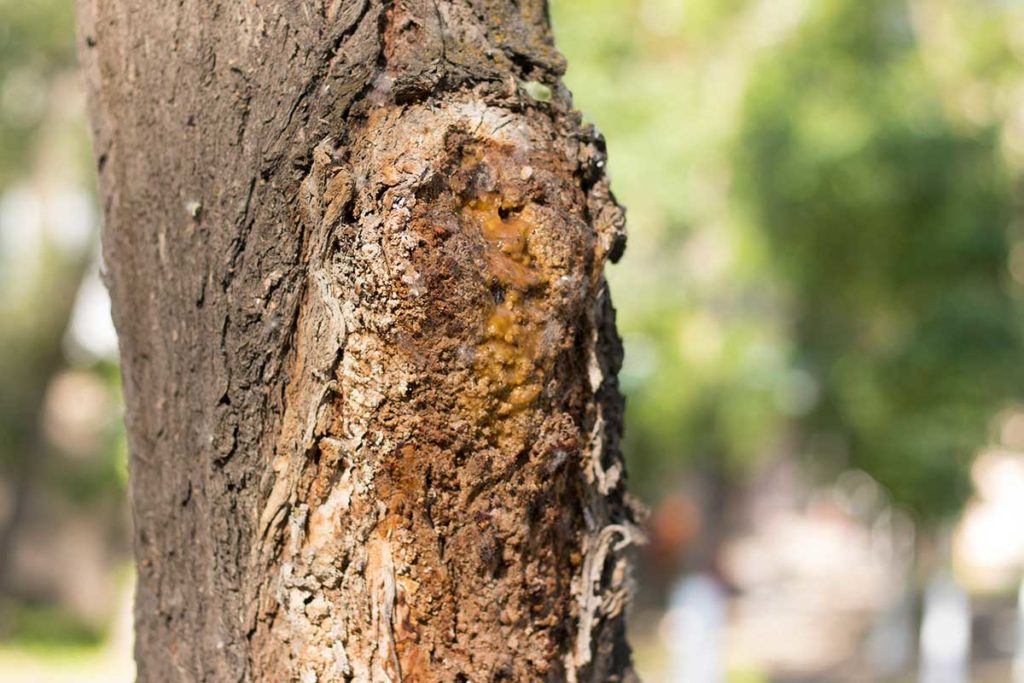Trees, like humans, are prone to damage and susceptible to various diseases. By spotting the signs of a dying tree, you can save unhealthy trees before it is too late or remove dying trees from your property before the disease spreads to other plants. Since that is dangerous work, you need the assistance of qualified arborists and skilled professionals. To save dying trees in your locality, reach out to Prestige Tree Experts in Maryland for tree healthcare services.
Unhealthy trees are not only bad for the environment, but they also affect the beauty and quality of your living space. To know more about the signs of a dying tree and chemical treatment programs for plants and shrubs, call us at 240.281.3334.
Signs of a Dying Tree
Unhealthy trees and drying trees give off several signs, as discussed below.
Powdery Mildew
If you notice a white powdery spot on the surface of leaves, it is a dangerous fungal infection. Eventually, it can spread to the entire plant and slowly kill it. However, it is possible to reverse the damage with the timely application of fungicide.
Thinning Branches
Thinning branches often indicate poor tree health. Perhaps the roots are damaged or not getting adequate water. You may have to check the drainage system and ensure that your trees are well-watered.
Rapid Leaf Loss
Similarly, the loss of leaves also suggests that the trees are not getting enough water. Without adequate watering, the anchoring roots will get weak. In such cases, you should consult a qualified arborist to make a full diagnosis of tree health.
Brown Spots
The presence of discolored leaves or brown spots indicates leaf spot disease, which is caused by a fungus. If detected in the early stages, a chemical treatment can cure it.
Black Spots with an Unpleasant Smell
Sometimes, you may find black spots or dark brown spots growing on your trees which are frequently accompanied by a bad smell.
This is a sign of a bacterial disease caused by slime flux or bacterial wetwood. It usually affects tall trees such as elm, poplar, and oak. A wound in the tree’s bark causes excess sap to ooze out, which can get infected by bacteria.
Holes in the Trunk
Thus, any damage to the tree’s bark can cause it to weaken and die. If you notice that parts of the tree bark have holes in them or have been eaten or gnawed out, you may have animals and insects (called borers) to blame for it.
Yellowing Leaves
Yellowing leaves often suggest nutritional deficiencies or lack of water. Again, a qualified arborist can assess the tree’s health, soil quality, and other factors to make a complete diagnosis and develop a long-term tree healthcare plan.
The good news about unhealthy trees is that trees rarely die overnight. Thus, it is possible to save dying trees by spotting the early signs of a dying tree and seeking professional help.
Alternatively, if it is too late, you will need to hire professionals to do the dangerous work and remove dying trees from your property.
Save Dying Trees with Prestige Tree Experts
You can always count on Prestige Tree Experts to restore life to unhealthy trees or remove dying trees from your property. With an expert team comprising the top certified arborists in Maryland, we are dedicated to protecting and preserving the beautiful green environment where you live, ensuring its longevity and safety. As such, we offer various tree healthcare services, including chemical treatments that can reverse the damage done to unhealthy trees, along with tree trimming, pruning, and removal services.
Whether it’s the health of a tiny sapling or the removal of a tall tree, you can trust our team for the highest quality of work. Call us at 240.281.3334 and book an appointment today.

